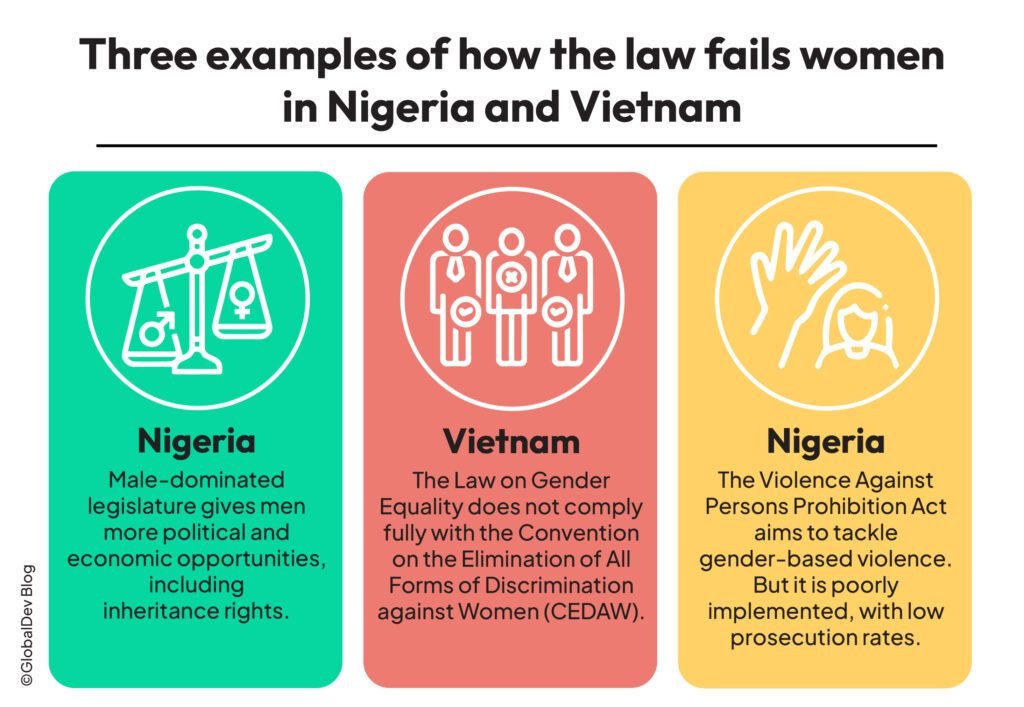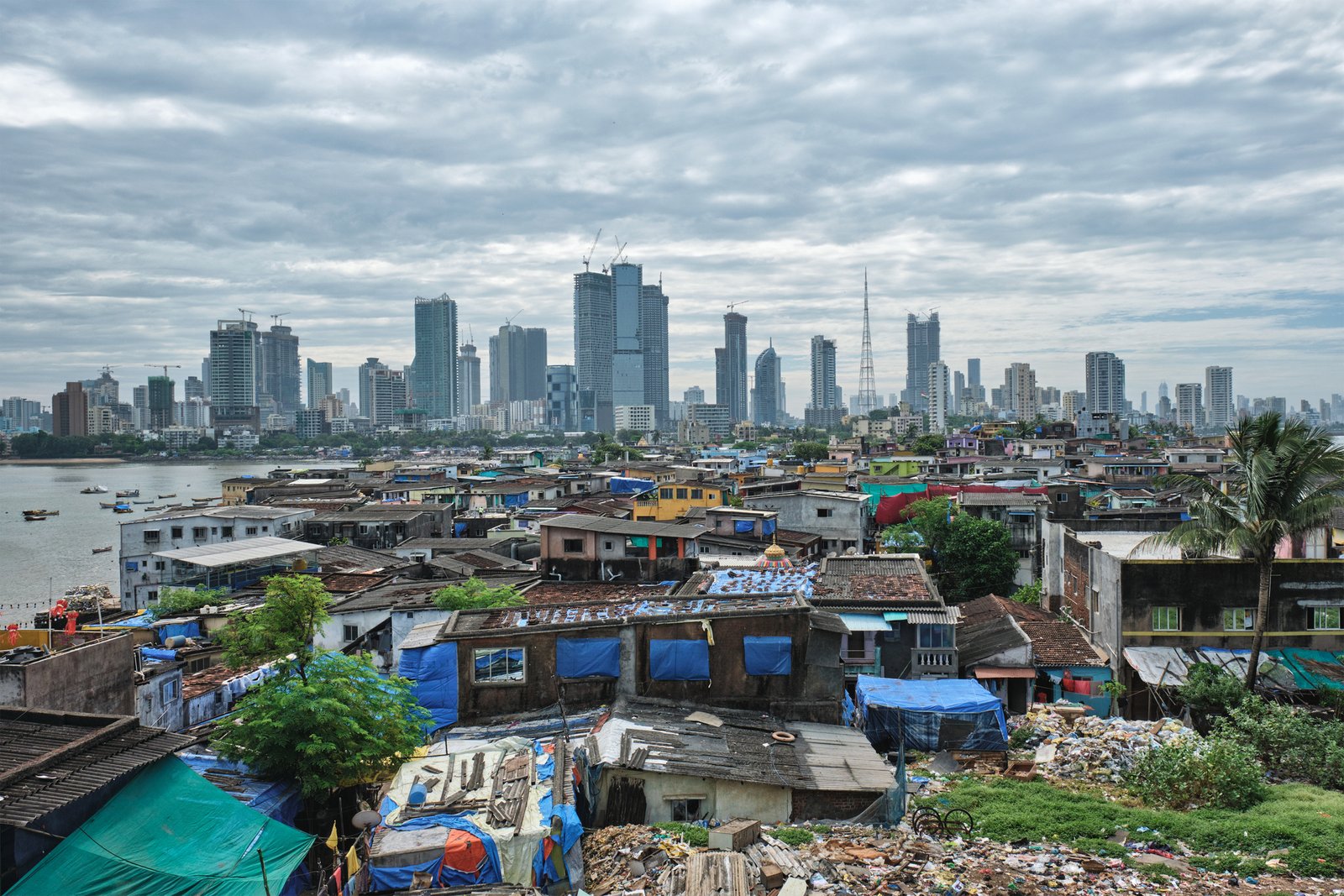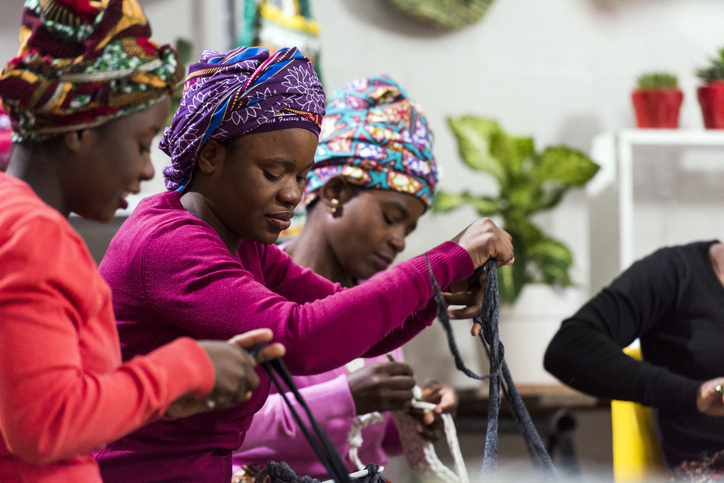How are women in the Global South being excluded from the development process? This column, the second of a two-part series, draws lessons from the experiences of Nigeria and Vietnam, focusing in particular on how existing legal frameworks might be contributing to gender inequality.
Women around the world face deeply entrenched barriers to equality with men. As we discussed in an earlier blog that focuses on Nigeria and Vietnam, women are ill-served by public services and their unpaid care work is underestimated. Their opportunities for paid work are very different to men’s.
The law should be an instrument for enacting justice and overcoming these inequalities. But it can occasionally become a tool of marginalization that exacerbates them.
How is the law contributing to gender inequality in Nigeria and Vietnam? We look at the evidence.
Male dominated legislature and the impact of activism
Due to the male-dominated legislature in Nigeria, women face a significant challenge in representation and recognition. Political science scholar Makama affirms that in Nigeria, patriarchy elevates men to positions of authority in both society and families. The result is that men have more political and economic opportunities including inheritance rights.
It is noteworthy that advocacy efforts, such as protests, digital activism and community mobilization might gradually be producing modest outcomes. One example is the passage of the “Rivers State Prohibition of the Curtailment of Women’s Right to Share in Family Property Law No. 2 of 2022” law. This piece of legislation upholds the rights of women in Rivers State Nigeria to a share in the ownership of their family’s property.
In response to heightened violence against women and girls in the country, an example of how public services have not met women’s needs well, advocacy efforts have led to the domestication of the Violence Against Persons Prohibition Act (VAPP) in 34 states across Nigeria. VAPP is a comprehensive piece of legislation geared towards curbing the menace of gender-based violence in the country. Yet despite the adoption of VAPP across several states, prosecution of perpetrators remains low, which emphasizes the need not just for adoption of existing laws but also implementation.
Regarding the legal framework to address gender inequality, Vietnam has shown significant improvements, but there are still challenges. Vietnam’s first Law on Gender Equality was enacted in 2006, considering forms of discrimination against women, especially ethnic minority and rural women. Since then, several other policies and measures have been adopted, including the National Strategy on Gender Equality for the period 2021–30, which aims to promote Vietnam’s gender equality and women entrepreneurship.
But some provisions of the 2006 Law are not fully consistent with the Convention on the Elimination of All Forms of Discrimination against Women (CEDAW) and other treaties adopted by the Vietnamese government. For example, the Law has yet to consider indirect discrimination. Besides, there are considerable gaps between the 2006 Law and Vietnam’s current laws, such as the Law on Marriage and Family, the Law on Prevention and Control of Domestic Violence, the Law on Social Insurance, and so on.
For example, the Law on Organization of Local Administration and the Law on Organization of the National Assembly have not provided enough measures to enhance women’s participation in decision-making bodies. There are still certain obstacles in the national legal framework that have hindered Vietnam’s progress on gender equality and women empowerment, which require further effort to tackle.
Final thoughts
The examples presented above indicate that women in the Global South still experience inequality in different forms in their families, communities, and the countries in which they live. Research and practical experience indicate that gender disparity affects a number of different facets of life, which taken together could further erode women’s status. The rights of women and girls must therefore be addressed through a multi-sectoral strategy, with a deliberate emphasis on the efficient implementation of legislation and appropriate funding of gender equality activities. Furthermore, development initiatives must take into account the diversity of problems in each region, each country, and each community to create transformational solutions and programmes that reflect the realities of the people and bring women closer to gender balance and full equality.








